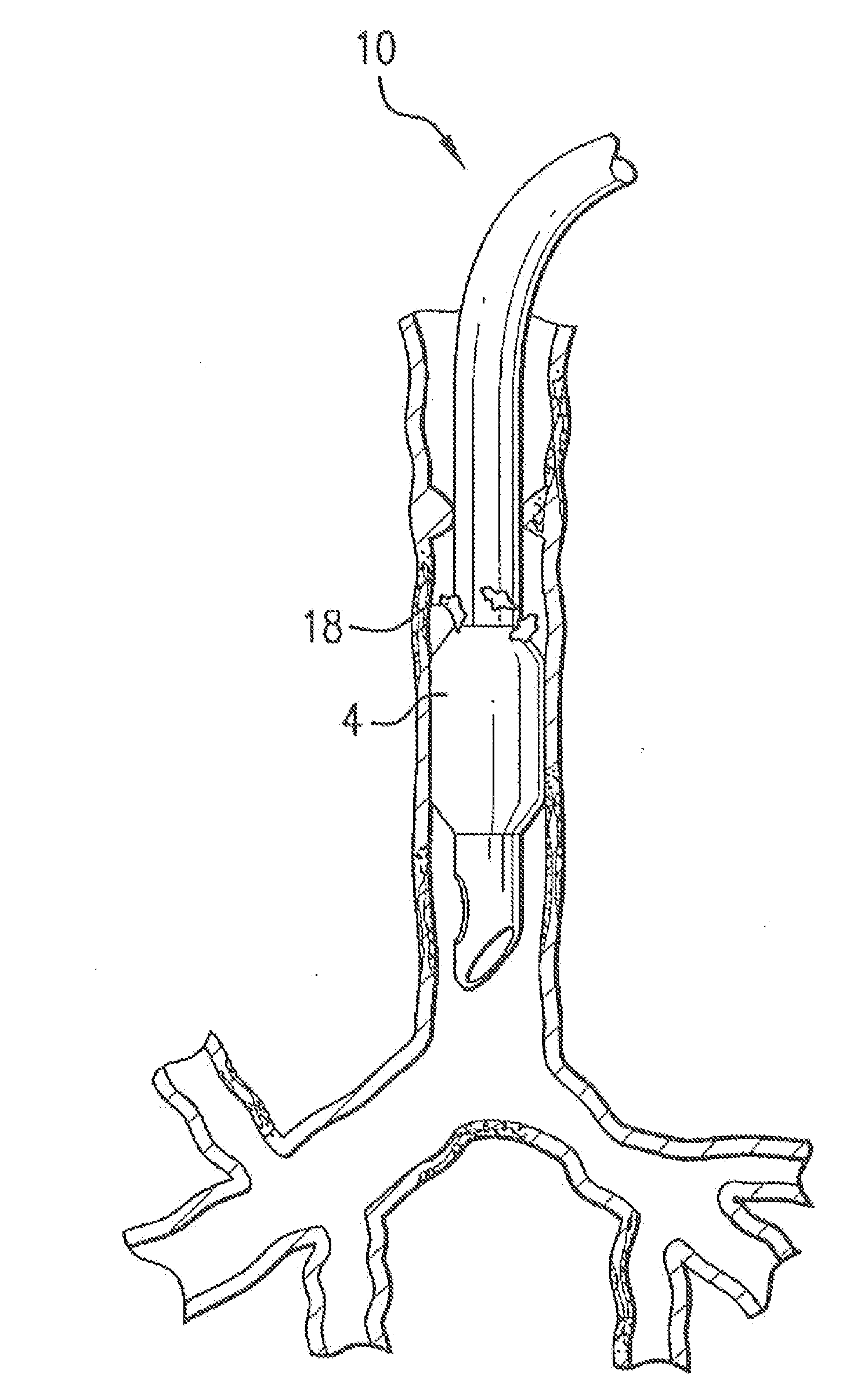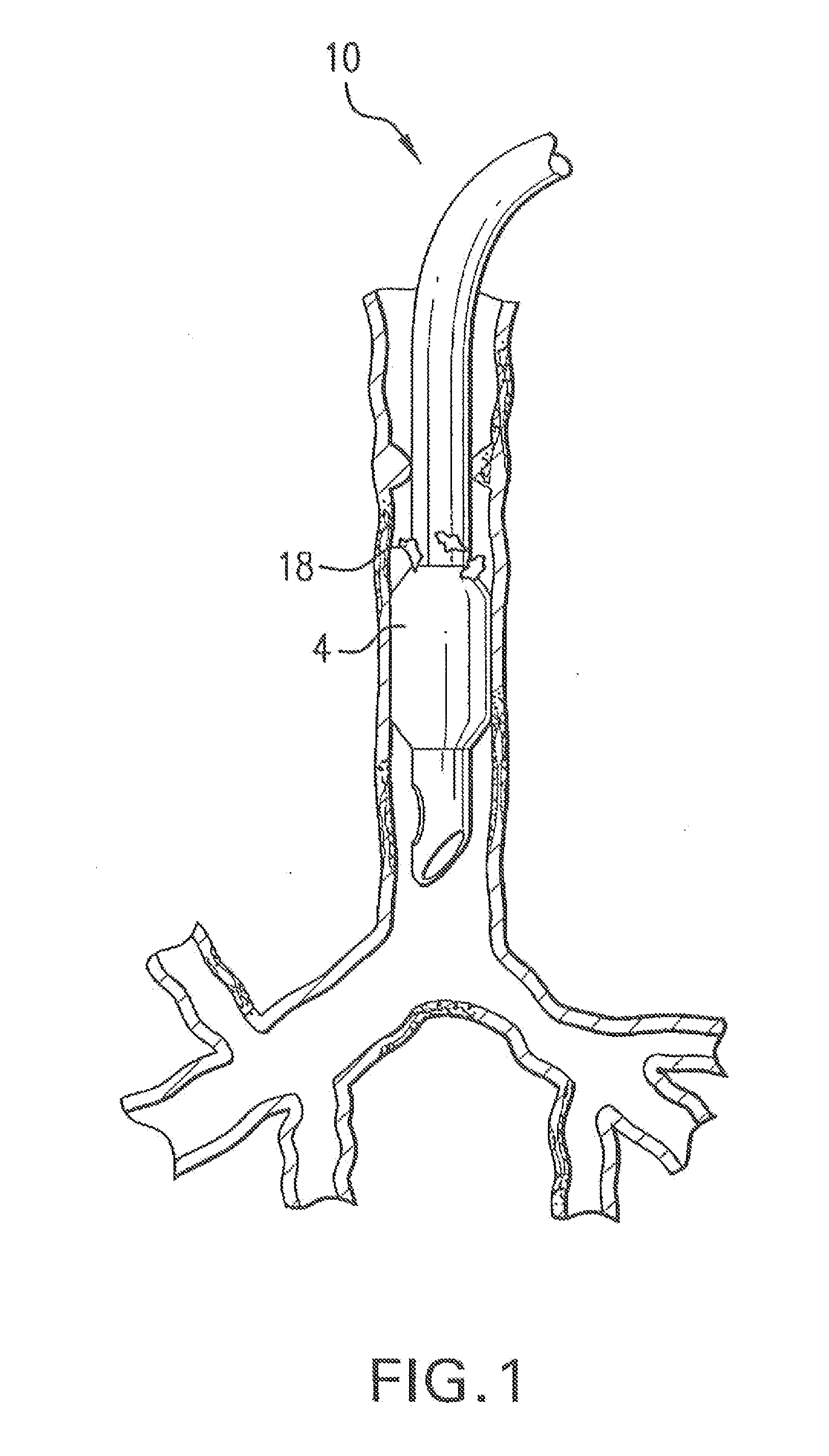Medical device with antimicrobial layer
a medical device and antimicrobial technology, applied in the field of medical devices, can solve the problems of prolonging hospitalization, pneumonia in ventilators, affecting the survival rate of patients, so as to promote the development of more disease resistant bacteriotypes and mitigate the colonization of the tube surfa
- Summary
- Abstract
- Description
- Claims
- Application Information
AI Technical Summary
Benefits of technology
Problems solved by technology
Method used
Image
Examples
third embodiment
[0047]In one embodiment, the AM layer may be within a range of about 0.002 mm-2.5 mm in thickness, or about 0.13 mm in thickness. In another embodiment, the AM layer may be within a range of about 0.002 mm-2.5 mm in thickness. In a third embodiment, the AM layer may be up to about 6.35 mm in thickness. In one embodiment, substantially similar materials may form both the inner and outer surfaces of the tube.
[0048]In one embodiment, an inner or an outer AM layer may be simultaneously extruded with the medical device wall in a process commonly known as “co-extrusion.” In another embodiment, both an inner and an outer AM layer maybe extruded simultaneously with the medical device wall in a process sometimes referred to as “tri-extrusion.”
[0049]Applying an AM layer to the surface of a medical device may reduce the incidence of VAP. There may also be a production cost savings to be gained by extruding an AM layer on a medical device over a conventional coating process.
[0050]In one embodim...
first embodiment
[0052]In FIG. 2 is shown a medical device 100 according to the invention. Medical device 100 may be a catheter, a stent, a feeding tube, an intravenous tube, an ET tube, a circuit, an airway accessory, a connector, an adapter, a filter, a humidifier, a nebulizer, or a prosthetic, in various embodiments.
[0053]Medical device 100 may have a conduit 102 for a fluid and an inflatable cuff 104 disposed at a first end 114 of conduit 102. The fluid may be a gas, an aerosol, a suspension, a vapor, or droplets of liquid dispersed in a gas. A lumen 116 may be disposed alongside conduit 102 to inflate cuff 104. In one embodiment, a wall 112 of conduit 102 is made of a hydrophobic polymer, a hydrophilic polymer and an antimicrobial compound.
[0054]As shown in section 4-4 shown in FIG. 4, a wall 412 of conduit 102 is made of a hydrophobic polymer with an outer layer 406 composed of a hydrophilic polymer and an antimicrobial compound disposed on an outer surface 408 of wall 412. An inner layer 404 ...
second embodiment
[0056]In a second embodiment, a method of making a medical device 100 comprises the actions of providing a hydrophobic polymer, a hydrophilic polymer and an antimicrobial compound, combining the hydrophilic polymer and the antimicrobial compound, forming the hydrophobic polymer into a wall 412 of a conduit 102, and substantially simultaneously extruding the hydrophilic polymer and the antimicrobial compound as an outer layer 406 on a outer surface 408 of conduit 102.
[0057]In another embodiment, the method Further includes Forming the hydrophobic polymer into a cuff 104 on an end of conduit 102, and substantially simultaneously extruding the hydrophilic polymer and the antimicrobial compound on a surface of cuff 104.
[0058]In another embodiment, the method Further includes substantially simultaneously extruding the hydrophilic polymer and the antimicrobial compound as an inner layer 404 on an inner surface 410 of conduit 102 while wall 412 and outer layer 406 are being extruded.
[0059]...
PUM
| Property | Measurement | Unit |
|---|---|---|
| thickness | aaaaa | aaaaa |
| thickness | aaaaa | aaaaa |
| hydrophobic | aaaaa | aaaaa |
Abstract
Description
Claims
Application Information
 Login to View More
Login to View More - R&D
- Intellectual Property
- Life Sciences
- Materials
- Tech Scout
- Unparalleled Data Quality
- Higher Quality Content
- 60% Fewer Hallucinations
Browse by: Latest US Patents, China's latest patents, Technical Efficacy Thesaurus, Application Domain, Technology Topic, Popular Technical Reports.
© 2025 PatSnap. All rights reserved.Legal|Privacy policy|Modern Slavery Act Transparency Statement|Sitemap|About US| Contact US: help@patsnap.com



